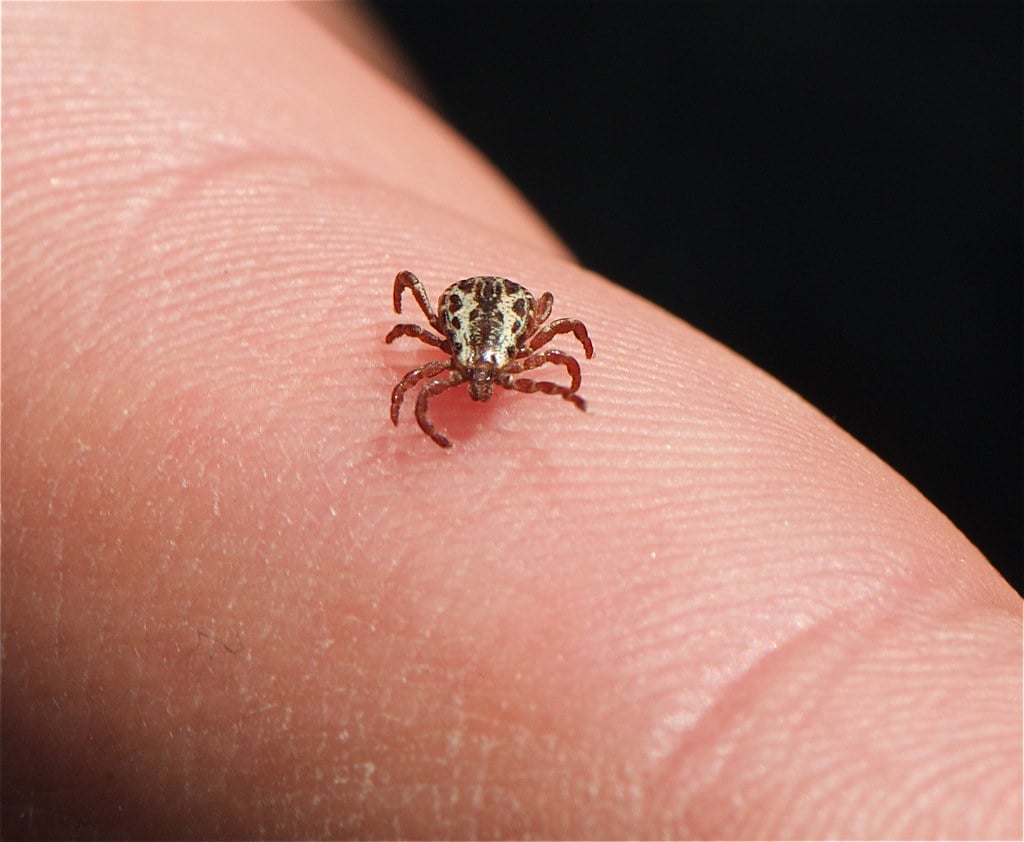Ticks. Yuck. Right? I mean, they’re pretty gross.
But they’re more than just gross. They’re dangerous, and not just for you. Dogs in particular are more common hosts for ticks than humans are. And cats are vulnerable, too.
More than that, climate change is creating shifts in where and when ticks are most prevalent, which means that even if you previously lived in an area that wasn’t a hotspot for tick-borne illness, that may not be the case anymore.
Want to see what the prevalence is of certain tick-borne illnesses in your area? Check out this map to get a sense of things.
In the meantime, let’s take a look at some of the more common tick-borne diseases.

LYME DISEASE
This is the one most folks think of when they think of tick-borne diseases. It’s caused by a bacteria that’s mainly spread by deer ticks, though it can also be spread by the western black-legged tick.
Common symptoms of Lyme disease include a reduced appetite, lameness, fever, and swollen lymph nodes and joints. These symptoms may not show up for 2 to 5 months, however, so it’s important to check your pet’s coat every day if they’ve been outside. In addition, a tick has to be attached to the pet for about 48 hours to transmit the bacteria, so catching ticks early is a must.
ROCKY MOUNTAIN SPOTTED FEVER
Despite the name, this disease pops up all over the U.S. and Canada (and special tip: Missouri is one of 5 states that accounts for 60% of all cases of Rocky Mountain Spotted Fever). It’s spread by deer ticks and the aptly-named Rocky Mountain spotted fever tick.
Signs of Rocky Mountain spotted fever may include fever (of course), reduced appetite, depression, pain in the joints, lameness, vomiting, and diarrhea. The bacteria causes damage and inflammation in tiny blood vessels, which is where the “spots” come from. These are visible on the skin but also occur in internal organs and can result in a potentially fatal illness.
EHRLICHIOSIS
Ehrlichiosis is a disease spread primarily through the bite of the lone star tick, which is not named after Texas, but is named for the white dot or “lone star” on an adult female’s back.
Acute symptoms include depression, reduced appetite (anorexia), fever, stiff and painful joints, and bruising, and can show up within one to three weeks. Chronic symptoms include more severe versions of the acute symptoms, but also include weight loss, swelling of the joints, and weakness.
ANAPLASMOSIS
Spread by deer ticks and Western black-legged ticks, anaplasmosis is caused by a bacteria transmitted from ticks that have previously bitten host animals such as deer and rodents, and is similar to ehrlichiosis. Another form of anaplasmosis (caused by a different bacteria) is carried by the brown dog tick.
Signs of it include pain in the joints, fever, vomiting, diarrhea, and possible nervous system disorders. Pets will usually show symptoms within 1 to 2 weeks of transmission.
BABESIOSIS
Babesiosis is caused by protozoa transmitted by ticks that then set up shop in the red blood cells, causing anemia.
Signs of babesiosis in dogs are typically severe, including pale gums, depression, dark-colored urine, fever, and swollen lymph nodes. It’s usually around 24 to 48 hours after the tick attaches when transmission occurs.
CYTAUXZOONOSIS
This is the only disease on this list that affects cats only.
The bobcat is the natural host of the parasite that causes cytauxzoonosis, but it can affect any member of the cat family, both wild and domestic.
Cats with cytauxzoonosis may develop anemia, depression, high fever, difficulty breathing, and jaundice. In addition, the lymph nodes, spleen, and liver may be enlarged. The disease progresses rapidly if left untreated with death possible in 2-3 days after the spike in fever. And even if they survive, they may be carriers of the disease for life.

WHAT TO DO?
So now you know some of the bad stuff out there being spread by ticks. If you paid attention, you may notice that a lot of these diseases have some similar symptoms, which can make diagnosis difficult.
What’s a pet owner to do?
Prevention is really your best bet. Having your pets on a preventative is the best, most consistent way to make sure that any ticks that find their way to your pet don’t attach themselves. Never spray your pets with any sort of repellant; only use pet-strength preventatives.
But what else can you do?
When it comes to cats in particular, well, it’s honestly better if they don’t go out at all. Not that ticks can’t end up in your home through other means, but it greatly decreases the risk; plus it’s just better overall for a cat’s well-being. In fact, on average it lengthens their life expectancy by 12 years if they’re indoor only. That’s a pretty big difference!
But for dogs, well, they go outside to use the restroom, so no matter what, you’re going to have some risk of ticks landing on your dog. That’s why it’s best to check them every day just to be sure, but especially if your area is prone to deer and mice, or is especially wooded, as those situations are most likely to harbor ticks.
Here’s a great little graphic from the CDC that shows the main areas to check on your pet:
It’s also important to check yourself for ticks since you can’t wear prevention (except sprayables with DEET, which you should never use around or on your pets), and ticks could easily hop on and take a ride inside your house, biting you and making you sick, or making a break for your pet and getting them sick.
All it takes is a little prevention and a little diligence to make sure that your pets are safe from tick-borne illnesses. But if you do notice symptoms like the ones mentioned in this article, be sure to reach out to your full-service vet right away. Catching these diseases as soon as possible is paramount.


